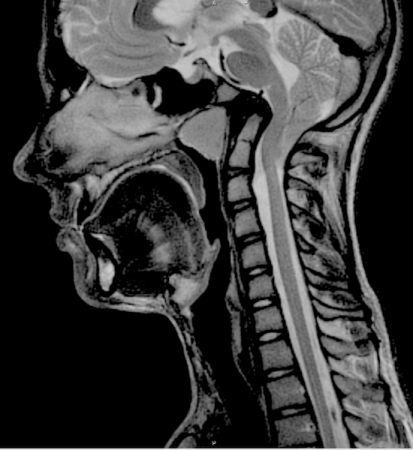
The displacement of the “tonsils” of the cerebellum towards the spinal canal is called Arnold-Chiari malformation (ACM). As the cerebellum protrudes into the spinal canal, both the cerebellum and the upper spinal cord (brainstem) are compressed in the canal. Therefore, signs of compression of the cerebellum and spinal cord and symptoms of obstruction of the canal passing through the middle of both develop. The most important of these is the blockage of the channel.
Hydrocephalus occurs when the cerebrospinal fluid (CSF), which is in continuous circulation between the brain and spinal cord, accumulates above the obstruction, and the enlargement of the spinal canal, or syringomyelia, occurs with strong pressure from the brain to overcome the obstruction.
In Arnold-Chiari malformation, gait disturbances due to compression of the brain stem and cerebellum, involuntary movements in the eyes called “nystagmus”, difficulty in swallowing especially liquid foods, nasal speech called nazone can be seen.
In most cases with this disorder, there is a slight prolapse of the cerebellum from the cranial cavity to the spinal canal, but there is no significant compression. In this case, the symptoms we mentioned have not yet occurred. These people can be followed up without the need for surgical treatment.
Surgical treatment is applied to patients who show signs of congestion in the person’s examination or examinations. The basic principle in surgery is to relieve the pinched area. For this, the neck root and the upper two posterior bones of the neck vertebrae are removed, the membrane surrounding the brain and spinal cord is expanded with a patch and the congestion is relieved. This process is called “decompression”.
BAs the first symptoms of the disease are remarkable, it is usually diagnosed early and patients can continue their normal lives without loss of function. In cases whose treatment is delayed for some reason and progresses, severe neurological manifestations such as severe gait disturbance, loss of fine dexterity, and swallowing disorder occur.
I would like to share with you a patient about this subject;
Our patient is a 24-year-old male. He applied to our outpatient clinic with complaints of neck pain, dizziness, numbness in the arms, and feeling of weakness for about 3 years. As a result of the examination and radiological examinations, we made the diagnosis of CEREBAL PROJECTION (Chiari Malformation). (As seen in the photo, the balance organ in the lower back of the head, the cerebellum, descended approximately 2 cm towards the spinal canal in the direction of the yellow arrow. Its normal level should have been at the level of the dashed yellow line). The cerebellum protruded into the spinal canal and was stuck there. We suggested surgery to the patient and we operated. We loosened the spinal cord and cerebellum by opening the skull bone, neck bones and cerebrospinal membrane (dura) on the area where the cerebellum hangs. He was discharged 2 days after his dressings and drug treatments.

